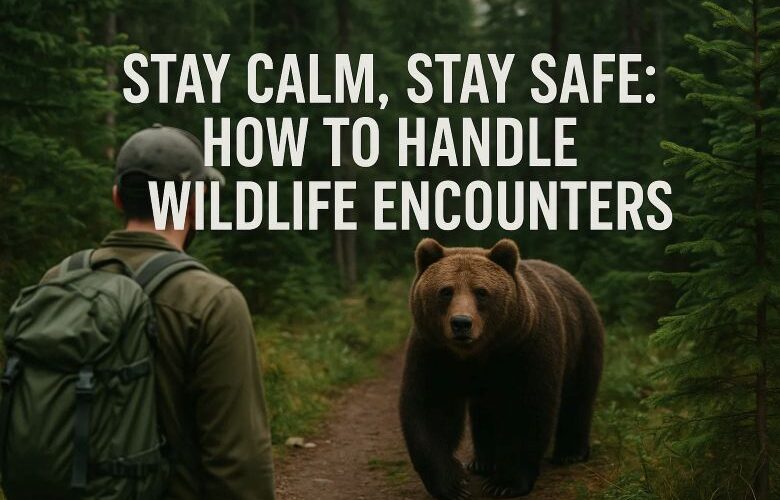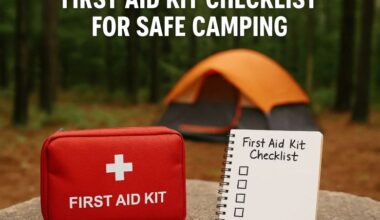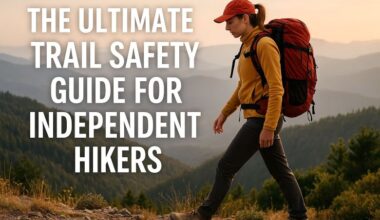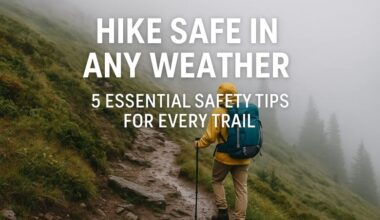From curious raccoons to unexpected bear encounters, the wild doesn’t come with a warning sign. Wild animals live in the outdoors just like us. Sometimes, they cross our path unexpectedly.
Knowing what to do can keep us safe and help protect these animals too. Wildlife encounters can be scary, but staying calm makes all the difference.
This guide shows how to recognize animal behavior, prevent surprises, and react smartly during an encounter.
Recognizing Wild Animal Behavior and Risks
Understanding Animal Behavior
Animals often show signs before they act aggressively or become frightened. For example, a bear might stand on its hind legs to get a better look, or a coyote may howl to warn others.
When animals tilt their ears back or puff up their fur, they may feel threatened. Learning to read body language helps you guess what the animal might do next.
Common Wild Animal Encounters
Many outdoor adventures involve encounters with creatures like bears, coyotes, snakes, and mountain lions. These animals usually stay away from humans, but they might react if surprised or if food is nearby.
Usually, encounters happen in forests, mountains, or near water during early mornings or late evenings, times when animals are most active.
Risks Associated with Wild Animal Interactions
Wild animals can cause injuries through bites, scratches, or attacks. Some animals, like snakes, are venomous. Others, like mountain lions, can attack if they feel cornered.
Experts warn that careless interactions like feeding wild animals or surprise encounters increase the risk of injuries. Prevention remains the best way to stay safe.
Prevention Tips to Avoid Unexpected Encounters
Planning and Preparation
Before heading outdoors, research wildlife in your area. Know which animals are common and their habits. Carry safety tools like bear spray, a loud whistle, or a GPS device.
These items can help you signal for help or defend yourself if needed.
Safe Behavior in Wildlife Areas
Stick to marked trails, and avoid wandering into dense brush where animals hide. Keep food packed away in bear-proof containers, and never leave trash behind. Sweet-smelling foods attract animals and should be stored securely.
Making Your Presence Known
Use noise, talk, sing, or clap to alert animals you’re nearby. Bright clothing or colorful hats help make you more visible. Traveling with a group reduces the chance of surprise encounters. When animals know you’re around, they are less likely to approach.
Immediate Response During an Encounter
Stay Calm and Assess the Situation
If you face a wild animal, don’t panic. Take deep breaths and think clearly. Avoid running or making sudden moves, which can trigger aggression. Maintain eye contact, if safe, and stand your ground. Moving slowly might encourage the animal to see you as no threat.
Appropriate Actions for Specific Animals
Bear Encounters
Stand tall, wave your arms slowly, and speak loudly to appear bigger. Use bear spray when the animal gets too close. Running may trigger chase instincts, so it’s usually best to stay put. If a bear attacks, playing dead can sometimes help, curl into a ball, cover your neck, and stay still.
Mountain Lion or Large Cat Encounters
Make yourself look bigger by raising your arms or opening your jacket. Keep eye contact without staring aggressively. Back away slowly, avoiding turning your back. Never run; the cat might see it as prey.
Snake Bites
If bitten, stay calm. Immobilize the limb and keep it lower than your heart. Remove tight clothing or jewelry near the bitten area. Seek emergency medical help immediately. Do not try to suck out venom or apply ice.
How to Use Safety Equipment Effectively
Make sure your bear spray is accessible at all times. Practice using it to become comfortable with the spray. Signal for help loudly if needed, through whistles or emergency beacons. Quick response can turn dangerous situations into manageable ones.
Post-Encounter Procedures and Recovery
Ensuring Safety After the Encounter
After an encounter, check for injuries. Observe symptoms like bleeding, pain, or signs of shock. Report the incident to wildlife authorities if required. Document what happened, especially if an attack occurred, including photos or descriptions.
Medical Attention and Follow-Up
Get medical help promptly for any injuries. Even minor bites can lead to infections. Follow the doctor’s orders carefully, and keep records of treatments. Prompt care can prevent complications and ensure a full recovery.
Emotional and Psychological Recovery
Wild animal encounters can cause anxiety or shock. Take time to process the incident. Talk to friends or a counselor if you feel overwhelmed. Remember, most wildlife is more afraid of us than we are of them.
Expert Advice and Additional Resources
Wildlife experts emphasize the importance of respecting animals’ space. They suggest always being prepared and staying alert in nature. Check official websites from wildlife agencies for safety tips.
Many outdoor shops offer survival courses teaching how to stay safe around wild animals.
Conclusion
Remaining calm and prepared during a wild animal encounter can make all the difference. Prevention, quick thinking, and knowing what to do afterward protect both your safety and wildlife. Respect nature while enjoying outdoor adventures.
Keep these tips in mind, and explore the outdoors confidently; wildlife encounters don’t have to be dangerous if you’re ready.




